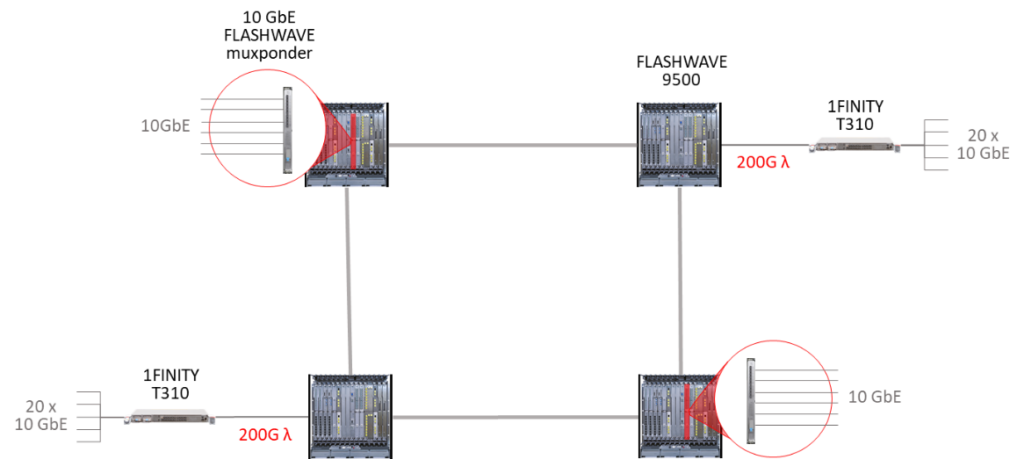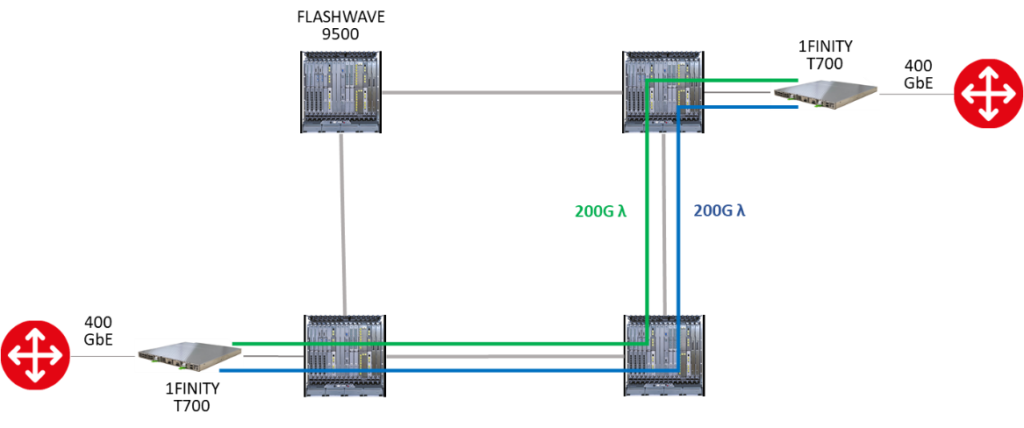
With swelling market demand for higher speed services such as 400GbE, or the need to increase bandwidth capacity, service providers are considering upgrading their existing fixed 50GHz grid ROADM infrastructure. But did you know it’s possible to keep your existing network while achieving both goals, and avoid the large CAPEX outlay (not to mention the disruption) of building a new network?
Of course, it does takes work to prepare the network and migrate the current 10G circuits. This blog outlines the issues and the steps involved in upgrading a ROADM network.
Requirements for putting new transponders on the fixed grid ROADM
Most current ROADM networks are based on a fixed optical grid with either 88 or 96 channels each with a passband width of 50GHz. Most of these ROADM networks are also typically deployed with Dispersion Compensation Modules (DCMs) initially installed to support older 10G wavelengths.
Coexistence is a basic requirement for the introduction of any new transponder technology. Newer coherent technology compensates for dispersion within the Digital Signal Processor (DSP). So, new transponders must not only be able to carry new services over an infrastructure limited by the 50GHz wide channels, but also carry new services over DCMs which are effectively an obstacle to efficient transmission over 100Gb/s.
This implies that it is critical for any new transponder to have the ability to transmit within a 50GHz spectral window as well as provide Forward Error Correction (FEC) algorithms which are strong enough to compensate the coherent signal degradation introduced by the DCMs.
The availability of a transponder with these capabilities can allow a carrier to transition their legacy 10G services to a coherent based 100G QPSK and even 200G 16QAM wavelengths. The impact of this network evolution leads to an increase in transmission capacity by a factor of 10 (QPSK) to 20 (16QAM) times.
The 1FINITY™ T300 Series and T700 transponders are engineered to provide this capability. These transponders support both 100G and 200G transmission modes compatible with a 50GHz channel and they can be directly deployed over either a dispersion compensated or non dispersion compensated network.
Preparing the ROADM network to support coherent transmission
Carriers can also further enhance the lifetime of their existing ROADM infrastructure by removing the DCMs from the network. Two distinct steps are required in order to achieve this goal. First, any 10G wavelength must be transitioned to a coherent wavelength. This can be achieved by replacing the 10G transponder for a 100G transponder but traffic demand might not be ready for such a circuit growth. Alternatively, multiple 10G circuits can be aggregated into a single 100G muxponder and transmitted as a single coherent based wavelength.
This first step of this network modernization led to the recovery of many channels and the complete elimination of 10G wavelengths from the network. At this point, the DCMs are still in the network but they are effectively not providing any value. The purpose of the DCMs were initially to facilitate transmission of 10G wavelengths beyond approximately 100 km point-to-point links. DCMs provide no value to coherent transmission – in fact, they are an obstacle to coherent transmission as they increase non-linear noise and contribute to a transmission distance reduction in the order of 30%.

The elimination of all 10G wavelengths allows the carrier to remove the DCMs from the network, if they choose to do so. This will improve network performance and open up opportunities for transmission at 200G (16QAM) over a distance of up to 1,000 km, which is more than sufficient for most metropolitan and many regional applications. This leads to the network configuration shown below.

Deploying 400GbE services over the existing ROADM network
The enablement of 200G/16QAM transmission also support transmission of emerging 400GbE Ethernet private line circuits over this older ROADM infrastructure. Some transponders, such as Fujitsu’s 1FINITY T700, provide the capability to accept a 400Gbps Ethernet interface and transmit it over two parallel 200G wavelengths, which can be mapped into two 50GHz wide channels as shown below.

This enhanced transponder capability allows carriers to use their existing fixed grid ROADMs and transport the highest commercially available Ethernet rate supported by routers and switches. This capability, as offered on the 1FINITY T700, can inject new life in your current optical infrastructure.
Fujitsu is always working to ensure that our customers are provided with long-lasting solutions by ensuring that new products are compatible with the existing network. The 1FINITY T-Series of transponders are engineered to support new technology while operating over the existing ROADM infrastructure.
For a deeper discussion on the issues involved in preparing a ROADM network to support coherent signals, download this Application Note.
Having migrated over a million optical circuits since 2014, Fujitsu Services’ experienced team has developed procedures and automation tools for network auditing, planning, and circuit cut-over that can assist service providers to ensure a quick, efficient and seamless network migration. Consider adding Fujitsu Services to your network migration team.